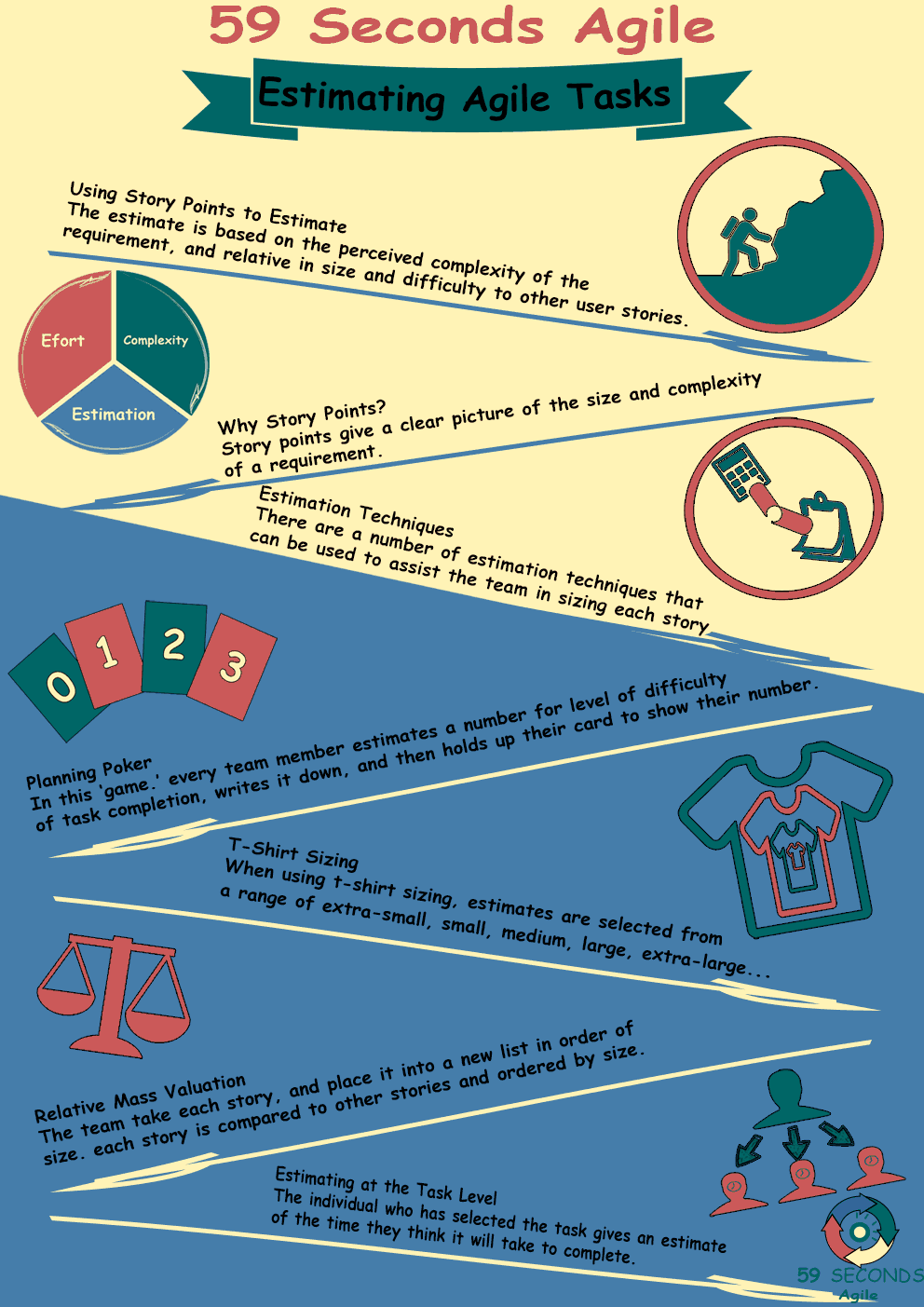
Estimating Agile Tasks for Scrum Masters – Part 2
Relative Mass Valuation
This technique is ideal when there is a large list of items that need to be estimated, usually when a team is at the initial stages of adopting an agile framework, and the product backlog has just been put together for the first time. With this approach, each item isn’t sized individually.
Instead, the team take each story, one at a time, and place it into a new list in order of size. So the first story gets transferred over, then the second story is compared to the first, and placed before it if it is smaller, or after it if it is larger. Then the third item is slotted in wherever it fits size wise, and so on until the whole list has been evaluated.
Estimating at the Task Level
Following the explanation of story points above, one might think that there is no place for estimating the time required to complete a task in Scrum. However, this is not the case. The distinction lies in the granularity of the piece of work that is being estimated, and the point in the cycle at which we are carrying out the estimation. Story sizing happens during the high-level planning stages, and it represents the productivity of the whole team.

At the beginning of the iteration, once the stories to be completed within the cycle have been selected, each story should be broken down into the specific tasks that are necessary for the story to be produced. Every task should then be assigned to an individual, and it is at this stage that the individual to whom the task has been assigned should give an estimate of the time they think it will take to complete.
Story Tracking
After the stories have been estimated and the team has started working on them, the Scrum Master must keep track of how each individual task is progressing.
Our Favourite Agile Books
We found these books great for finding out more information on Agile Scrum:
Story Tracking
The stories are moved to a state of ‘In Progress’ on the Scrum board, and every day, during the stand-up meeting, individuals should give an update of how much still needs to be done for the tasks that they are responsible for to be completed. This gives the Scrum Master the opportunity to remove any impediments, and to make sure that the team is able to deliver everything that they agreed to deliver at the planning stage.
There will be occasions when unforeseen issues arise, and in these situations, the Scrum Master, together with the rest of the team, will need to make a decision on whether the story needs to be resized, and either moved to the next iteration or potentially split into smaller chunks. Ultimately, over multiple cycles, this tracking of stories will allow the Scrum Master and Product Owner to understand the velocity of the team and to learn what areas to focus on in order to improve productivity.

